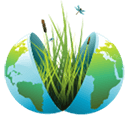
Volo Bog
About
GENERAL INFORMATION
Criteria:
- Protects biological diverse wetland flora, fauna and/or their habitat
- Supports significant numbers of wetland-dependent fauna, such as water birds or fish
- Rare or unique wetland type within its own biogeographical region. (Meeting this criteria would include, but is not limited to, wetlands with unique hydrology or chemistry that make it rare within its own region)
Volo Bog is the southmost open-water quaking bog in North America to exhibit all stages of bog succession. It is Illinois' only remaining open-water quaking bog. An herb mat of sedges and ferns surrounds the open water. Sphagnum moss joins the team as the mat thickens to support low shrubs such as leatherleaf, bog birch, and little bog willow, along with young tamarack trees. Further still from the open water, older tamaracks dominate and define their zone, floating up and down with changing water levels. At the outer edge of the tamarack zone, the trees no longer float as the peat joins with the accumulating peat below. Here the tamaracks die off giving way to the next zone - one of tall shrubs dominated by winterberry holly where shrubland birds including yellow warblers, common yellowthroat and veery find suitable habitat. At the outer edge of the shrub zone, where fire and minerals from surrounding runoff have influence, the tall shrubs give way to a marsh moat that in drier years becomes more of a sedge meadow.
Volo Bog was Declared an Illinois Nature Preserve in 1970 and a National Natural Landmark in 1973. It is used as an outdoor classroom by visiting students from elemenatry school through college as well as by scout and other you groups and adult learners from garden clubs, environmental and faith base groups and more.
Volo Bog is managed by the Illinois Department of Natural Resources within Volo Bog State Natural Area. The site also manages marshes, woodlands and prairie restorations. A Visitor Center housed in a renovated dairy barn features exhibits about Volo Bog and wetland ecology. Staff and volunteers are available to guide tours and offer other interpretive programs year round. The Friends of Volo Bog is a 501(c)(3) membership organization that offers financial support.
Exemplary Ecosystem Services:
Maintains ecological connectivity/cohesion
Aesthetic/cultural heritage value/ provisioning
Recreation (birdwatching, ecotourism)
Aquifer recharge
Carbon storage
Water quality improvement
Education
CONSERVATION STATUS AND THREATS
Conservation status: State/Province/Regional Protection
Adjacent Land Use: Emergent Wetland
Approximate natural buffer width:
> 100 ft
Other information:
Volo Bog State Natural Area includes Volo Bog, Pistakee Bog, plus marshes, woodlands, praire restoration areas, mowed picnic area and pathways. Ecological threats include increasing encroachment from purple loosestrife.
Land use surrounding the site includes a concrete recycling facility to the east that impacts the site with noise pollution and quite probably affects the hydrology of Volo Bog with dust particulate matter. Low-density residential borders the site to the north, west and south.
ECOLOGY
General wetland characterization: Inland Fresh Bog
Adjacent Water Bod(ies): Pond
Name of body of water: Eye of Volo Bog - open water at center
Surficial Geology:
Kettlehole bog with peat soils surrounded by glacial till deposits. For more information see Geology, Soils, and Hydrogeology of Volo Bog and Vicinity, Lake County, Illinois.
FLORA AND FAUNA
Dominant flora: Tamarack, Sphagnum Moss, Winterberry Holly, Poison Sumac
Unique flora: Northern Pitcher Plant, Starflower, Bog Buckbean, Leatherleaf, Blueberry, Bog Birch
Dominant fauna: Red-winged Blackbirds, Yellow Warblers, Common Yellowthroats, Bullfrogs, Greenfrogs, Chicago Garter Snake, Muskrats in some years
Rare fauna: Veery, Virginia Rail, Northern Water Snake
Images



